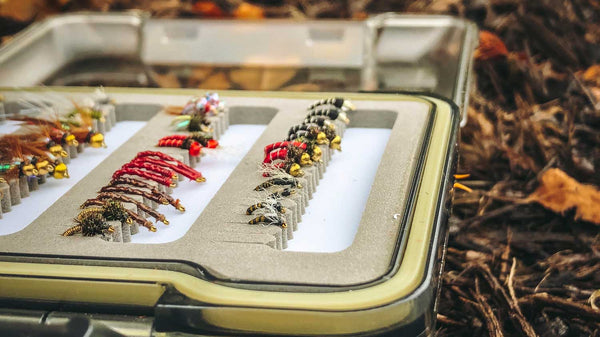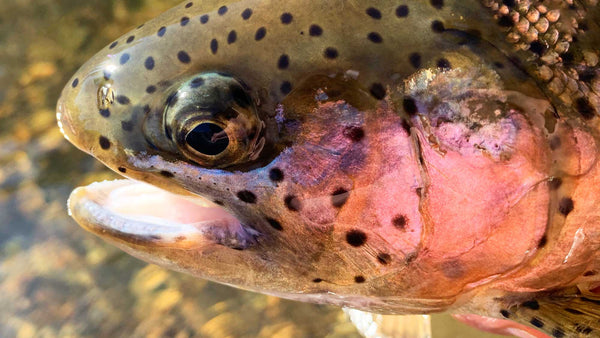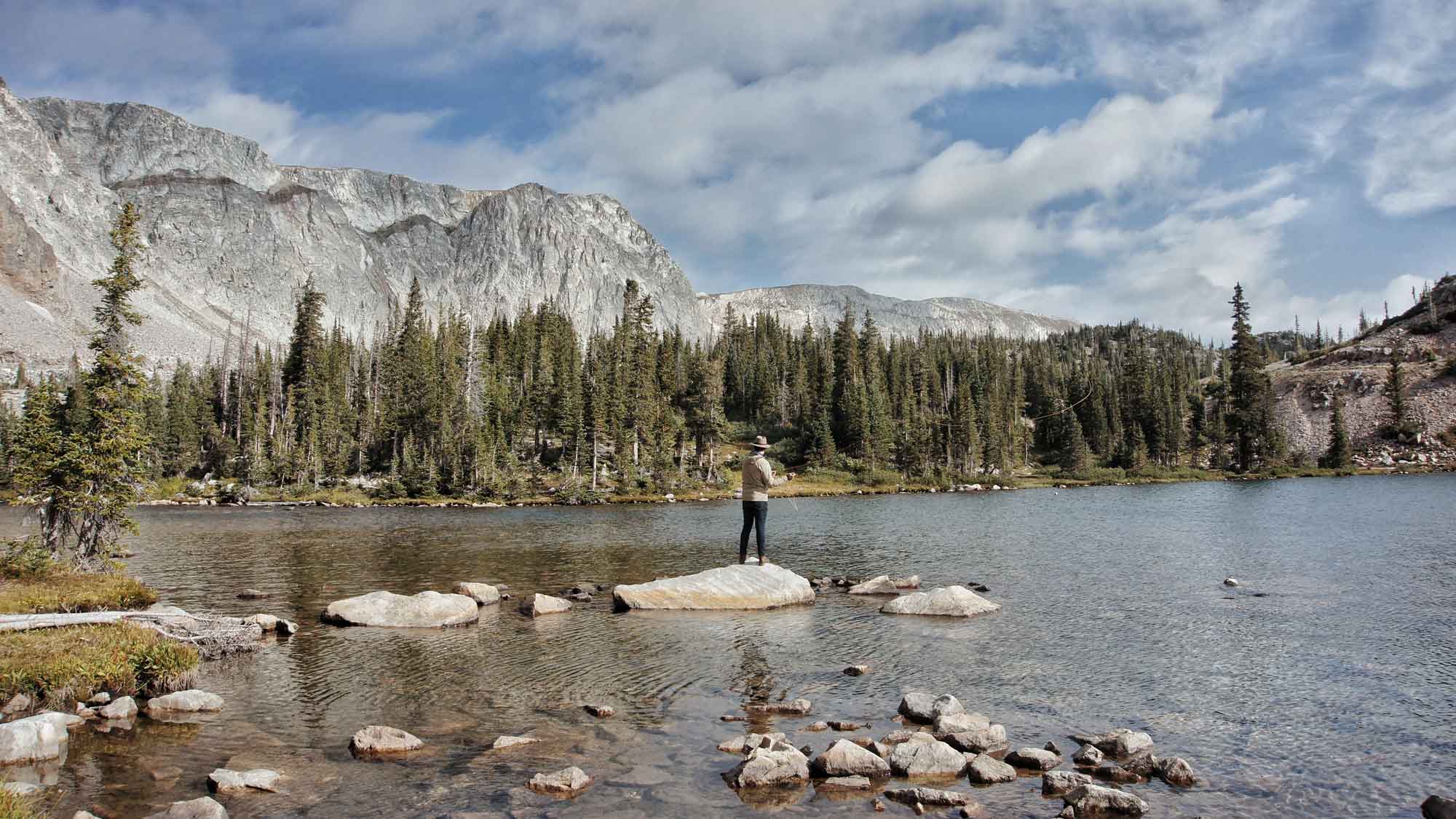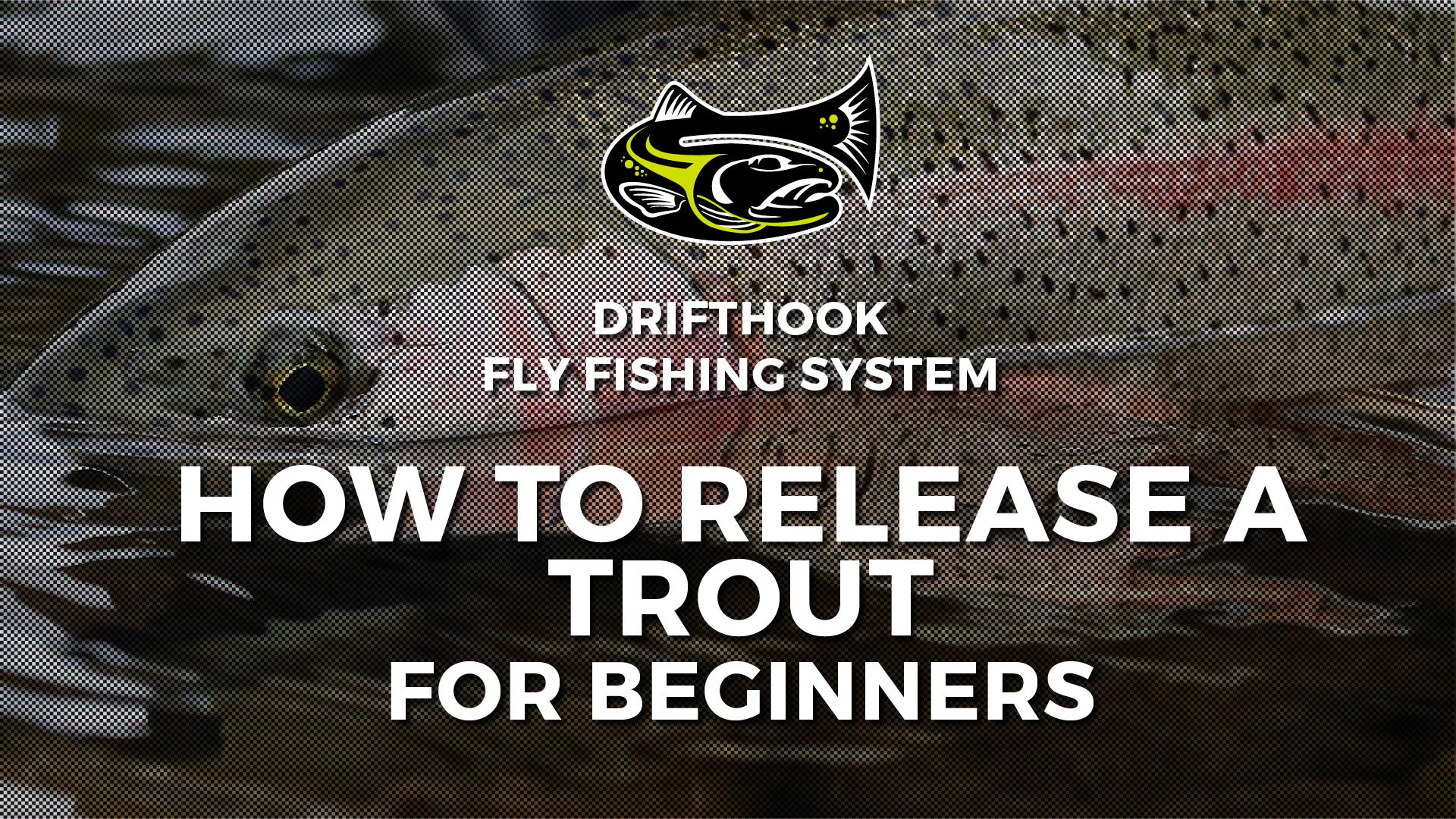
So how do you fly fish with midges? It’s all about the patterns you create and the level at which the midges are hitting the water. Most fly fishers would usually think to keep it at the surface level of the water. However, when fish are looking for these midges, they’ll be looking for it at eye level, which will be near the bottom.
When it comes to fishing, every opportunity wants to be a fruitful one, but that’s not always the case. Sometimes the fish just won’t bite, and that can be frustrating, especially when you’ve spent a lot of effort to get up early and sit outside for hours on end. However, many fishing spots have the fish there ready for you to catch, but it might be a case of what you have on the end of your fishing rod that’s causing the issue.
Fly fishing with midges can make for a more successful haul of trout, even with the frustration that comes from how delicate and small they are. You may be familiar with using midges, or you might have no experience whatsoever. This article will teach you all about the beautiful world of midges. Usually, they are seen as more of a pest to us humans, but they can certainly provide a more successful way of catching fish. Here are some tips to fly fish with midges.
What Are Midges for Fly Fishing?
If you've never come across using midges before, then you might not know everything there is to know about what they are and how they are so well-liked by many types of fish around the world. A midge is classed as any small fly, and they are found practically everywhere. Whether that be in your backyard or finding their way into your home during all times of the year, Midges are an essential source of food for many animals and therefore are indispensable as a source of food.

The lifecycle of a midge can be broken down into four stages. As far as fly fishing goes, you should only worry about three of those stages. The first of the stages is the eggs. Female midges lay their eggs usually on the surface and in a gelatinous mass that can sometimes float down to the river bed. Other midges will deposit these eggs in or under the water's surface. In general, it's usually one batch of eggs.

The second stage is the larva. These are little worms that have segmented bodies. The midge larva is classed as the standard ‘nymph' form of a midge. The larva appears in a variety of colors, and fishing the right color can be very crucial to its success at catching fish. As a second stage, this can be broken down into a further four stages known as instars. These can last between two weeks to four years in some cases.

The Pupa is formed once the lifestyle of the larva comes to maturity. They form wing buds and will be slightly longer in their body length. And lastly, the dries or adult midges are the final stages that fly fisher will care most about. They are often difficult to fish with but appear to look like mosquitos on the water and can be an excellent way to dry fly fish. Imitating them when fishing is best done by using specific patterns, but we'll discuss more patterns later on in this article.

The midge pupa's newly formed wings can trap gas bubbles, and that allows the midge to ascend to the surface. It's during this stage that many tend to get snapped up by fish. The cluster that these midges form on the surface of the water is due to them mating, and it's seen as a perfect meal for the trout because it's worth the effort for them to come up to the surface, rather than for just a single midge. It's important to learn about midges and their traits before you start using them fly fishing.
The reason for this is that with the knowledge you gain, they can further help your chances of successfully catching fish. Now that you have the basics of a midge laid down, it's important to know more about how they can benefit fly fishing. Just like anything new to you, you must understand how they can help you so that you have more chances of getting it right the first time around.

Understanding The Benefits Of Midges when Fly Fishing
Before you start using midges, it's important to know about the benefits they bring as part of your fishing experience. A lot of those who fish will tend to shy away from using this bait because of its difficulty. Midges are close related to mosquitoes, black flies, and the common housefly that you'd see in and around your home. That means there's a lot of midges out there that can directly benefit the success rate you have when it comes to reeling in fish.

Trouts love midges, and there are many other types of fish where midges are the central part of their diet. A lot of the midges tend to hatch in rivers that are kept at a consistent temperature. They're not too hot or cold, and that therefore makes for the perfect environment for midges to hatch. Not only are midges part of a fish's diet, but when conditions get too cold, there might be other bugs that fish eat that don't tolerate the weather conditions, meaning midges need to be in more constant supply.

Midges are born at the bottom of the river or lake, and that's something worth remembering for any anglers who are thinking of using midges. This is because not all fish are stupid, and they'll spot a trap if the midge is sitting at the surface of the water. Fishing below the surface is where you want to be to perfectly mimic the traits of a midge that hatches under the water.
When it comes to sourcing your midges, it's important to get a mixture so that you can change the pattern up in case a specific pattern is not fooling them. Although fish can fall for the bait, they're clued up to realize when there's danger nearby, and if you're using the same type of midge each time, you might end up having initial success, and then it has little effect. So a good selection of nymphs, emergers, and drys is important to have in your collection.
Where To Find Midges when Fly Fishing
Seeing as they're not in short supply, you can quickly get access to midges of all sizes and types. A lot of local fishing shops that sell fishing equipment will also have midges available to buy. It's always worth checking with the experts in-store and online to get an understanding of which ones work best for you and where you're fishing mostly. There might be certain types that have been known to work better for certain fish, and so it's good to make sure you're buying the right ones.

There’s also an opportunity for adding midges yourself, and there are plenty of videos and guides out there on the internet for you to self-teach yourself. You can see a handy video guide below if you fancy trying it out. In terms of fly tying yourself, it’s worth doing some research into what equipment you’ll need and the materials in which will make up your midge.
Once you've got a hand of tying them yourself, you can vary what you create, depending on which ones you find to be the most effective. You could also make alternatives to the popular patterns mentioned in this article to make them more efficient.
The Basics Of Midge Patterns for Fly Fishing
So now that you've got a better understanding of the lifespan of midges and how they can benefit fly fishing, it's now time to move on to midge patterns. Now this will be a quite lengthy section, as there are a few basic patterns that are worth going into a little bit more detail. This can help ensure that you get an in-depth understanding of how to make these patterns yourself to give yourself every opportunity to be successful at it.
When it comes to tying a successful midge, there are some key attributes worth nothing. Depending on the size of your tie will depend on the type of pattern you create. As midges tend to be quite small, the smaller the midge pattern, the better. Most midges are not going to be bigger than a size #16 hook, and so the smaller you can go, the better. Remember, tie on small! Less is more when it comes to the patterns, and by simplifying the materials used, you make it less suspicious for any fish that come across it.

You want your patterns to stand out, so adding a flash of color when it comes to the thread or other types of materials used can entice the fish and flash materials can imitate that bubble we talked about earlier that happens in the pupa stage of the midge. When making these patterns, you want to make them as subtle as possible. If they look too fake, then you're likely to scare away the fish. The more you can get it to look like a midge, the better.

When it comes to your fly box, you want to have a variety that you can alternate between. The more you have available to you, the better. We've scoured the internet for some of the best recommendations. So without further ado, here are just a few selections of basic patterns that you might want to try.
Smokejumper

These are a midge pattern that imitates an emerging midge pupa. These pupae can get stuck below the surface film of the water and therefore become a primary prey for trout. The wing pattern is created using CDC and thus helps to make it appear visible to the fish as the wing part of the midge. It's all about creating the illusion, and so all elements of that emerging Pupa are essential to remember to incorporate.
The Smokejumper is one of the most popular patterns to use. When it comes to coloring, this can vary depending on the types of species you are trying to imitate.
Root Beer Midge

It's something that would be easy to make by hand if you fancied trying your skills at making the midge from scratch. Some variations of these patterns have used glass beads to reflect off any light, creating that flash effect.
Griffith’s Gnat

When midges develop into the adult stage, they tend to fly pretty quickly. As a result, they tend to be the less exciting food for fish because they're not going to be sticking around on the surface of the water for long. However, this might be an opportunity to use it to appeal to fish by creating clusters of these adult midges.
As mentioned previously, the adult midges cluster together to mate and lay eggs on the surface. Griffith's Gnat is a popular and effective imitation of this due to its multiple 'legs’ and ‘bodies’ that look like midges collected together.
Mercury Midge

A tremendous all-around pattern that can work great alone or as a dropper. This midge combines simplicity with effectiveness, and this is something you want when using midges for the first time. This can be attributed to the glass bead and has been spoken about previously in this article in that it mimics the air bubble that a midge creates to rise from the river bed. It's a good one for beginner tiers and is worth trying out for yourself if you fancy making it yourself.
It’s very popular to use this pattern on a curved hook, perhaps a size 20 or 22.
Tungsten Bead-head Zebra Midge

The Tungsten Bead-head Zebra Midge is a pattern that's a great one to use when fishing. The bead head means that it can be drifted or hung off a dropper. Putting this under the surface can attract any feeding fish. The right fly pattern can provide excellent results, and this one is a must-have for your fly box. This is one that again can be made in different colors to help match the local midges in your area. This pattern is a simple one that's perfect for a beginner looking for the necessary options.
Rainbow Warrior

The Rainbow Warrior is a truly unique pattern and one that is deemed very popular and essential to have in your fly box. The colors can be mixed up depending on the color of the waters you're fishing in too. When the waters aren't that clear, it can be great to have something bold and colorful to break through the murky waters.
Juju Bee Midge

The Juju Bee Midge, created by Charlie Craven, a river guide of South Platte, imitates the pupa stage of an emerging midge. The hair that's used for this midge creates the segmented abdomen of the Pupa. Midge larva and pupae are so widespread in tailwaters that it's worth starting with this pattern when it comes to the start of the day. It's a deceptively simple-looking fly that's worth getting and having amongst your collection.
Micro Larva, Fluorescent Red
When it comes to the winter season, it's essential to break out the midges because the bulk of the fish's diet could be limited due to their food sources being those insects that don't like the cold. The winter months make up for the bulk of a trout's diet. Midge larva is identified because of their wormlike appearance, and so the micro larva in a fluorescent red can resemble that of a worm shape. These segmented tubes that make it look like midge larva can easily be created with a few wraps of tying thread.It’s a pattern that’s worth taking advantage of if making yourself at least to have plenty in your fly box.
Brassy
 And finally, on our list of popular midges, we have the Brassy. When it comes to the Brassy, it's an excellent nymph pattern that offers three features. The wire body can help imitate the segmented bodies of those midges and caddisflies. They are also straightforward to tie and therefore are an excellent choice for beginners who are still becoming accustomed to putting on a midge. It also sinks like a stone, and that means you can fish deeper.
And finally, on our list of popular midges, we have the Brassy. When it comes to the Brassy, it's an excellent nymph pattern that offers three features. The wire body can help imitate the segmented bodies of those midges and caddisflies. They are also straightforward to tie and therefore are an excellent choice for beginners who are still becoming accustomed to putting on a midge. It also sinks like a stone, and that means you can fish deeper.
This was invented in Colorado in the 1960s. The original Brassy has a body made up of copper wire and a head of wrap tubing. This pattern is effective on trout, and the three creators Ken Chandler, Gene Lynch, and Tug Davenport, marketed it to fly shops nearby.
The wrap tubing over the years was eventually replaced by peacock herl, and the hook gave way to the curved emerger hooks that are more popular with these types of patterns. You can also get this pattern tied with wires of different colors, including red, green, or two colors on a single fly.

Where To Fly Fish Midges & Useful Tips
Finding the right midges is one thing, but if you're still finding your feet with fly fishing or not having much success with it, then it could be you're not fishing in the right spots. With midges, you can fish all year round, and for those who have a love for fishing, that can make for a thrilling opportunity. You firstly want to consider that to successfully use midges, and it's good to fish in spots where there are consistent temperatures like tailwaters or spring creeks.
You might want to consider the time of day that pupae often emerge too. This tends to be in the morning and evening, so it’s worth timing your fishing trips to accommodate these timings and to get the best out of the opportunities given to you. As mentioned on Fly Lord’s Mag, they recommend that you start with a midge nymph in the morning. As the day goes on, you can switch to a midge emerger with a nymph and then using an adult pattern with the emerger below it.

There are also some handy tips worth mentioning when it comes to fly fishing with midges. Firstly, making use of a light tippet is going to help make the midges more effective as they are smaller than other bait that you would usually use. When it comes to choosing a nymph for the first time, it’s worth looking at the midges that are already around the area and that you can see. You want to be as accurate as possible, so doing a little visual research can certainly help with that.
It's worth keeping an eye on the loop that hangs beneath the rod. This can help alert you to detect subtle takes and to hopefully catch the fish earlier on than you would have. As far as fishing goes, you need to keep your eye on the prize at all times. It's undoubtedly a waiting game that you need to have a lot of patience in.
And finally, focus on water that is slack, so around rocks and banks. These are the areas where you’re more likely to find the clusters of adults who are mating and where trout tend to be gorging themselves on. A lot of effort can go into a successful fly fishing trip, so make sure you use these tips to benefit your chances of catching a fish or two.

Fly fishing with midges has been proven very effective for those who wish to try their efforts with something different than live bait. Often enough, fish can catch on to the tricks that fishers will pull, and it's good to have a varied fly box to keep them second-guessing. With so many variations and patterns out there, hopefully, this guide has given you a starter pack of patterns to choose from. Whether you buy them or have a go at making them yourself is entirely up to you.
As far as midges go, they are pretty effective when it comes to fly fishing, and if you haven't already given them a go, then they're definitely worth trying. You can find a range of fly fishing kits to start you off on our online shop, and you'll probably find a few variations of the patterns mentioned in this article.
Fly fishing with midges certainly makes for a more enjoyable experience, especially when you have a better success rate overall! Give it a go if you haven't already, and don't forget to make use of the internet with all its resources.

About the Author
Matthew Bernhardt, a third-generation Coloradan, grew up at the forefront of the state’s fly-fishing revolution, enjoying time on the water side by side with experienced guides and lifelong anglers.
By combining his passion for fly-fishing with input from other experienced fly-fishers and guides and his fine arts degree from Colorado State University, Matthew spent five years carefully developing the Drifthook Fly Fishing System, built to help every angler catch more trout.
When he’s not spending time with his wonderful family, you’ll find him out on the water catching MONSTER trout, and he anxiously looks forward to the day when his kids are old enough to join him there.




